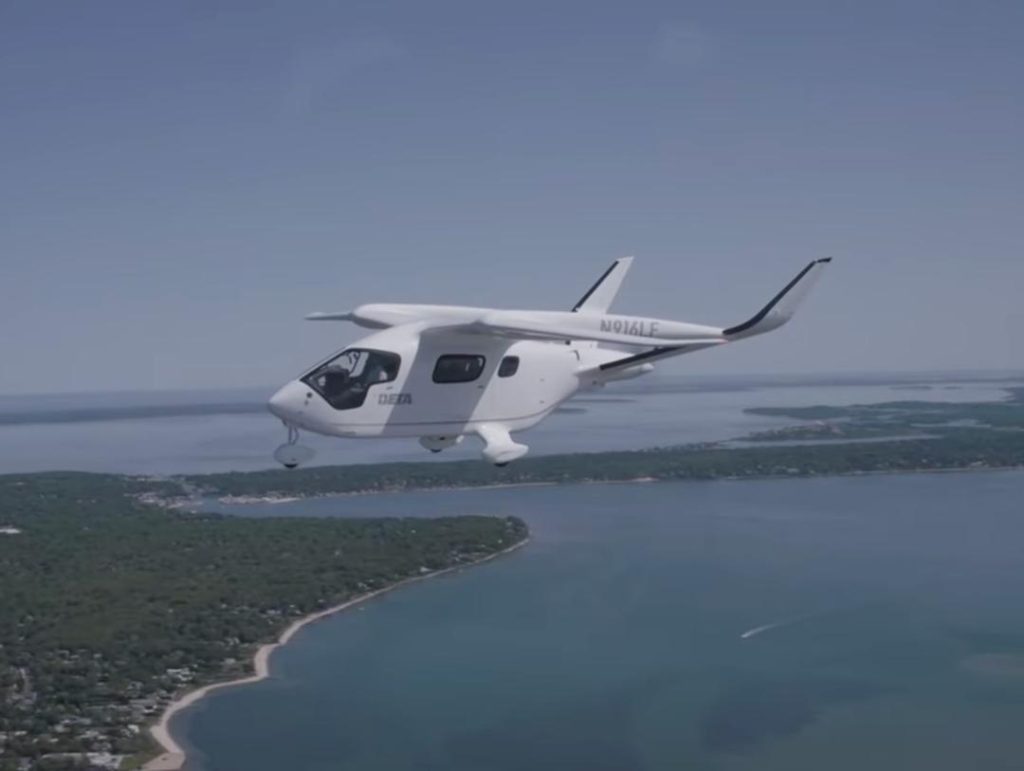
1st Electric Plane to Carry People Flew 130 km for ₹700, Helicopter Would’ve Costed ₹14,000
In a significant breakthrough in the field of sustainable aviation, the world’s first electric passenger plane has successfully completed a 130-kilometer journey in the United States. The Alia CX300, built by Beta Technologies, took to the skies on Tuesday, carrying passengers over the scenic landscape of Vermont, USA. What’s even more astonishing is that the entire journey, which lasted 35 minutes, cost a mere ₹700!
In comparison, a helicopter completing the same journey would have burned through $160 (approximately ₹14,000) worth of fuel. This staggering difference in costs highlights the potential of electric planes to revolutionize the aviation industry. The ₹700 cost, however, does not include the fees for the pilot and the airplane itself.
The Alia CX300 is a biplane, designed specifically for short-range flights, and has been in development for several years. The electric plane is powered by a 1,000 horsepower electric motor, which is fueled by advanced lithium-ion batteries. The batteries are designed to be lightweight, yet provide a range of over 300 kilometers.
The successful test flight marks a significant milestone for Beta Technologies, which has been working tirelessly to make electric aviation a reality. The company has received significant funding from investors and has partnered with several major airlines to develop its technology further.
The benefits of electric planes are numerous. Not only do they produce zero emissions, reducing their carbon footprint significantly, but they are also quieter and produce less noise pollution. As the aviation industry continues to grapple with the challenges of climate change, electric planes offer a promising solution.
While the Alia CX300 is specifically designed for short-range flights, it’s not too far-fetched to imagine a future where electric planes become a common sight in the skies. With advancements in battery technology and the decreasing cost of production, electric planes could soon become a viable alternative to traditional fossil-fuel powered aircraft.
The cost savings alone make electric planes an attractive option. According to a report by the International Air Transport Association (IATA), the aviation industry is projected to account for around 12% of global carbon emissions by 2050. Electric planes could help reduce these emissions significantly, making air travel more sustainable.
The development of electric planes is not without its challenges, however. One of the major hurdles is the limited range and recharging time of the batteries. Currently, the Alia CX300’s batteries take around 30 minutes to recharge, which could be a limitation for longer flights.
Another challenge is the need for infrastructure development. Electric planes require specialized charging stations and equipment, which would need to be installed at airports and other locations. This would require significant investment and coordination between governments, airlines, and manufacturers.
Despite these challenges, the success of the Alia CX300 is a major step forward for the electric aviation industry. As technology continues to evolve and improve, we can expect to see more electric planes take to the skies, revolutionizing the way we travel and reducing our environmental impact.
In conclusion, the Alia CX300’s successful test flight is a significant milestone in the development of electric aviation. With its impressive range, reduced noise pollution, and cost savings, electric planes could soon become a major player in the aviation industry. As we move towards a more sustainable future, it’s exciting to think about the possibilities that electric planes could bring.
News Source: https://www.ndtv.com/feature/first-electric-passenger-plane-flies-130-kilometers-for-just-rs-700-8737613/amp/1






